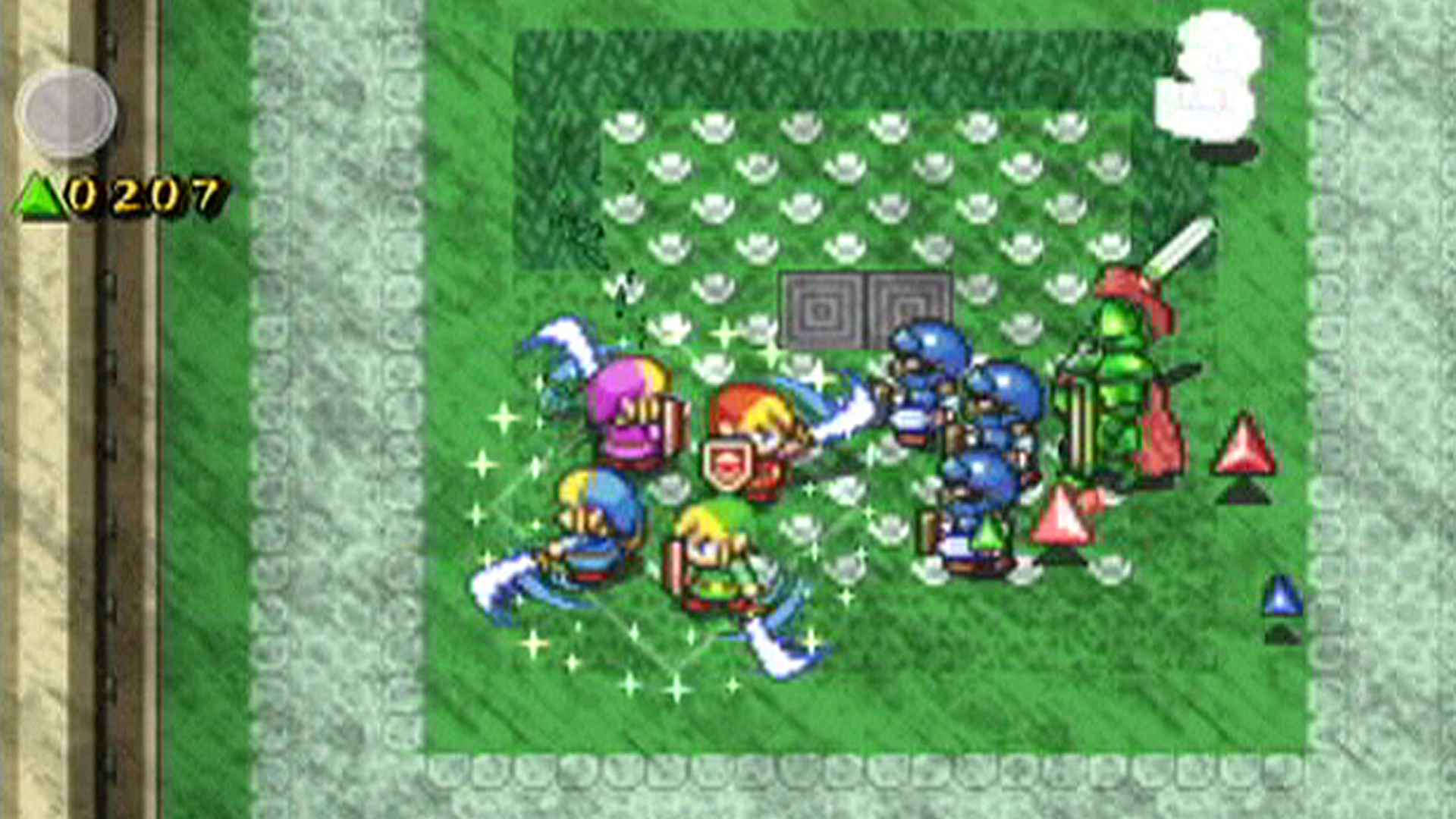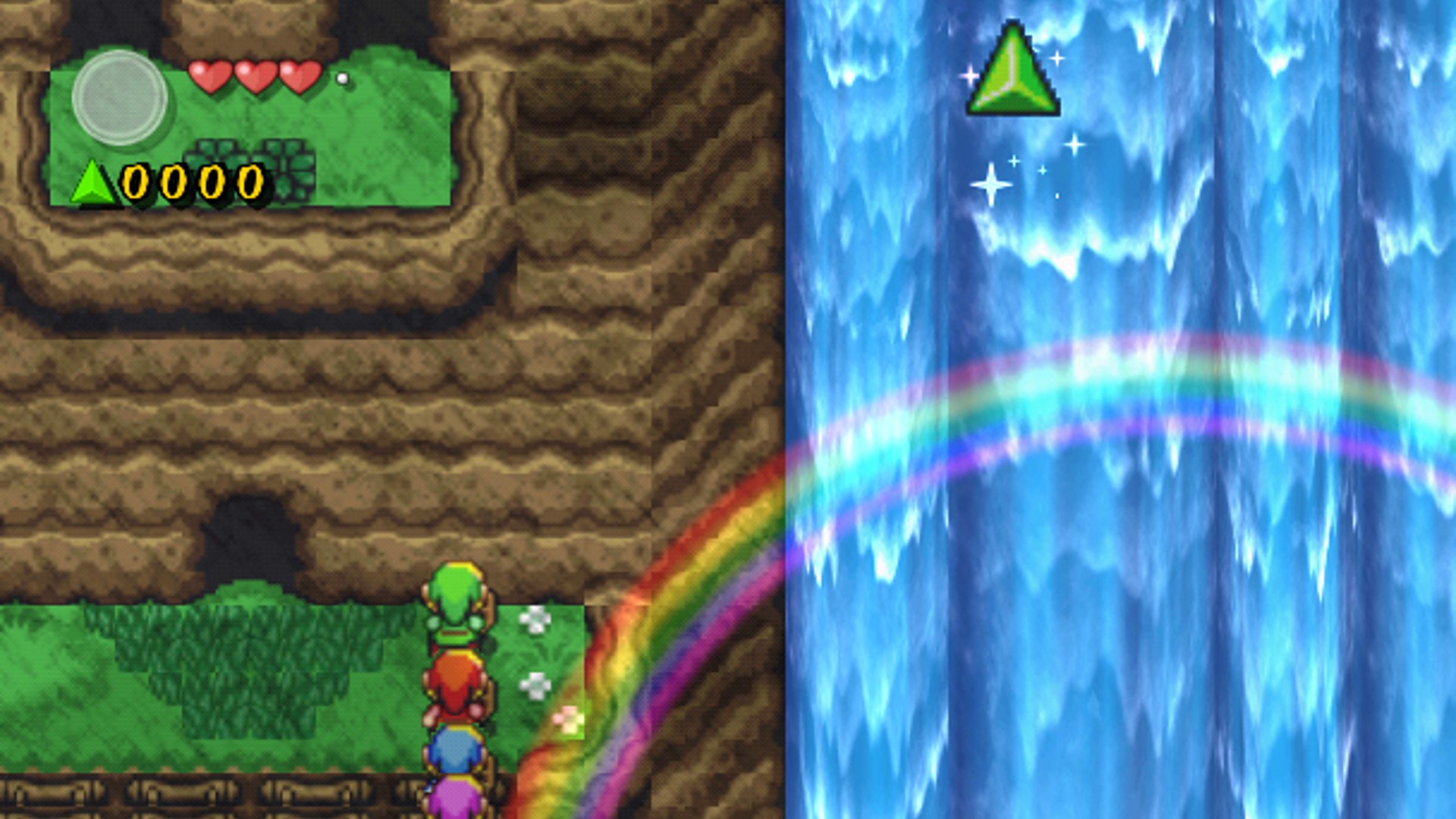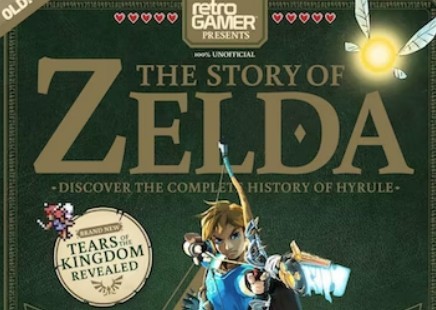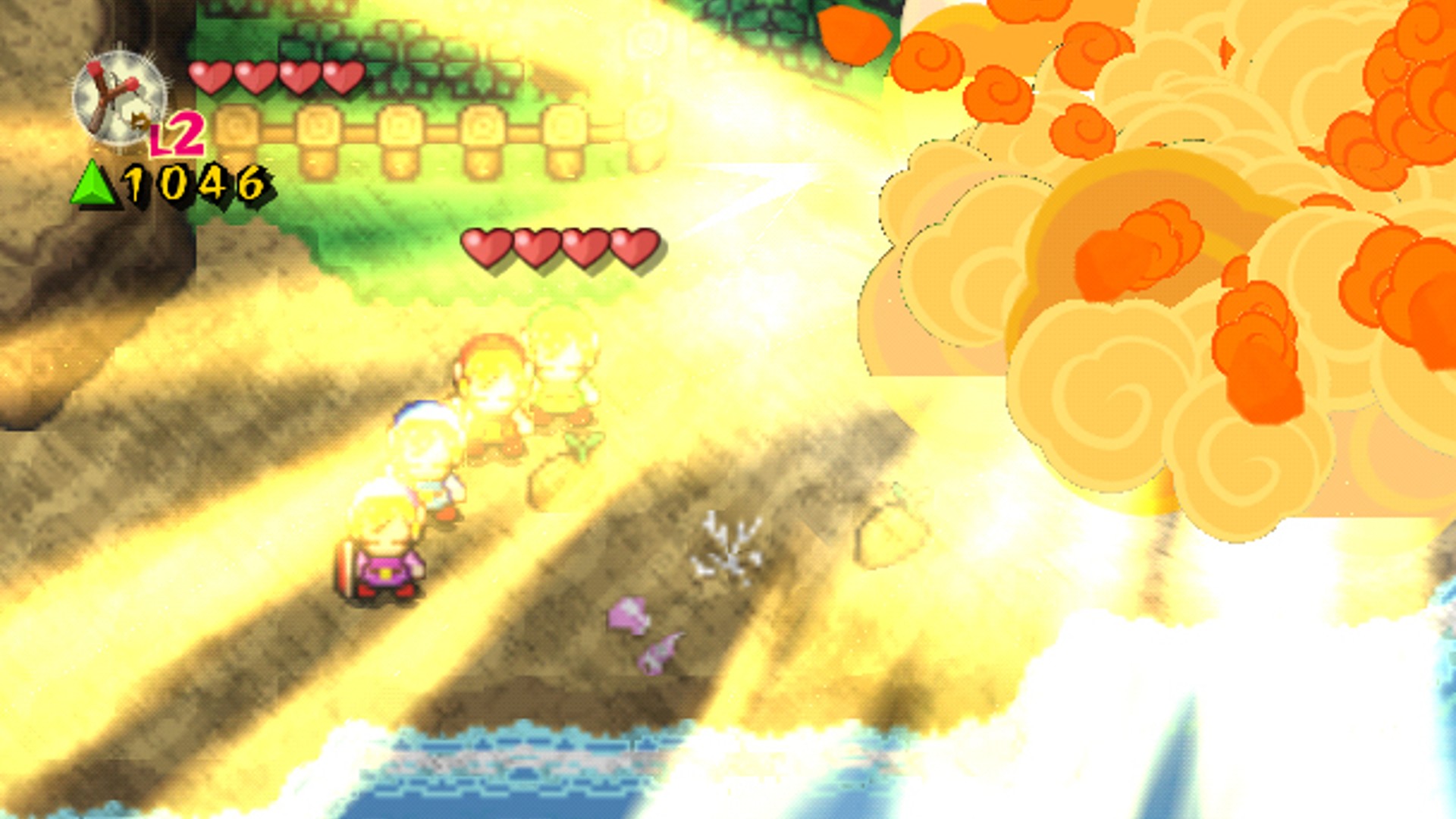
Revealed in 2003, Four Swords Adventures, alongside Tetra's Trackers, highlighted the connectivity between Game Boy Advance and GameCube. Nintendo and Capcom had already proven the merits of a four‑player Zelda game thanks to the addition of Four Swords to the GBA version of A Link To The Past, which enabled four Links to team up and solve dungeons while they competed against one another for rupees. It was a great idea, if a little rough around the edges, and was obviously the inspiration for Nintendo's new GameCube project.
Several months later, Nintendo announced that the two games (Four Swords was now known as Hyrulean Adventures, while Tetra's Trackers had changed to Navi Trackers) would be included on the same disc and joined by a third title, Shadow Battle. Navi Trackers sounded particularly intriguing at the time because it featured a speech navigation system that would recognise a player's name and notify them when it was their turn to play. Unfortunately, only Japanese gamers got to experience it. However, even with just two of the proposed games, the western version of Four Swords Adventures proved an essential release for any Zelda fan.
Essential


The meat of Four Swords Adventures is the excellent 'Hyrulean Adventures', which expands magnificently on Capcom's original GBA multiplayer effort. Unlike the vast majority of Zelda games, Four Swords Adventures takes place over eight distinct worlds, broken down into three smaller levels featuring such well-known locations as Lake Hylia and Kakariko Village, and always culminate in an exciting boss encounter. It was a massive step away from the traditional sprawling worlds of Ocarina Of Time and The Wind Waker, but it perfectly suited the more arcade-style trappings of Four Swords Adventures' gameplay mechanics.
When playing on your own, you typically control one Link, with the other three following you (don't worry; you can control each one independently when needed). When using linked-up Links, you'll need to master four different formation styles, which cover everything from defence to setting up attack strategies and solving puzzles. While initially tricky to get to grips with, you soon get used to the new mechanic and, before long, will be activating switches, swapping attack formations and lobbing huge boulders many times your size without a second thought.
The arcade-style pace only increases further when playing with friends; while you need to work together to progress, the inclusion of Force Gems allows for plenty of squabbling between teammates. At certain points of the game, the screen can become filled with a showering of gems, which immediately cause a frantic fracas as you rush to collect them all. Collecting gems grants its own rewards, as it greatly powers up your sword and enables you to break the seal at the end of each stage. This tense competition between friends is further fuelled by the inclusion of eight fun minigames that range from racing horses to collecting monsters. Additionally, we shouldn't forget about the separate game 'Shadow Battle', which pits you against your mates until only one Link is left standing. In fact, the only downside to the multiplayer was its reliance on four Game Boy Advances and GameCube-to-GBA adaptors to play it.

Luckily, while Four Swords Adventures benefits greatly from playing with friends, it is still a superb adventure when playing in single-player, where you are tasked with taking control of all four Links at once. Admittedly, the story is a little twee – and the ending is something you'll probably be able to see coming a mile off if you've ever played a Zelda game before, but it's assembled with so much love and attention that you won't mind. Thanks to its unique design, you can only play the original game which means the game has risen in price in the retro gaming marketplace (especially the more lavish box set that comes with a Link Cable). And that's before you consider you'll need to pick up extra GBAs and Link Cables if you want to play with friends.
The reason why we're still thinking of this unique arcade-style trip into Hyrule is that it's just an amazingly charming little game that offers endless replay value. While there's no denying that the main joy of Four Swords Adventures comes from playing with up to three other friends, the single-player mode of Hyrulean Adventures is just as enjoyable. It features an array of clever puzzles and boss encounters that linger in the memory long after you've finished the lengthy solo quest.
Sure, the story is twee and perhaps overly familiar to any Zelda aficionado. The oh‑so‑cute visuals won't appeal to everyone, too – especially Ocarina Of Time and Twilight Princess fanatics – but the innovative gameplay mechanics, cleverly designed stages, and frantic arcade action will constantly draw you back into Hyrule's beautiful-looking world.
Keep up to speed with all of our celebratory Zelda coverage with our The Legend of Zelda celebration hub







